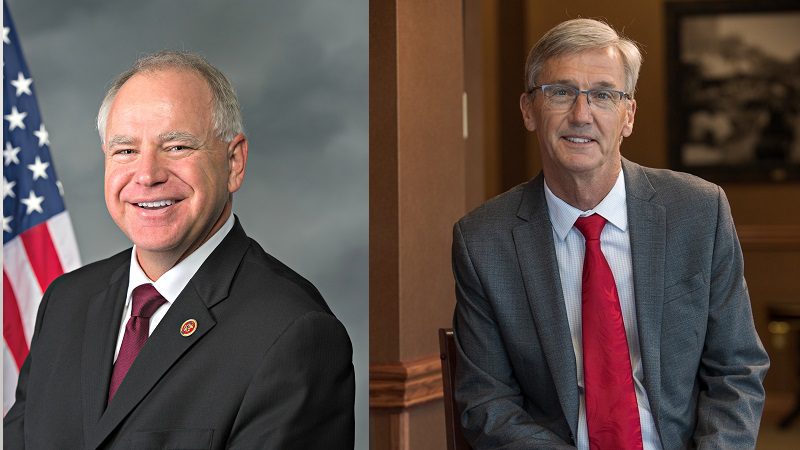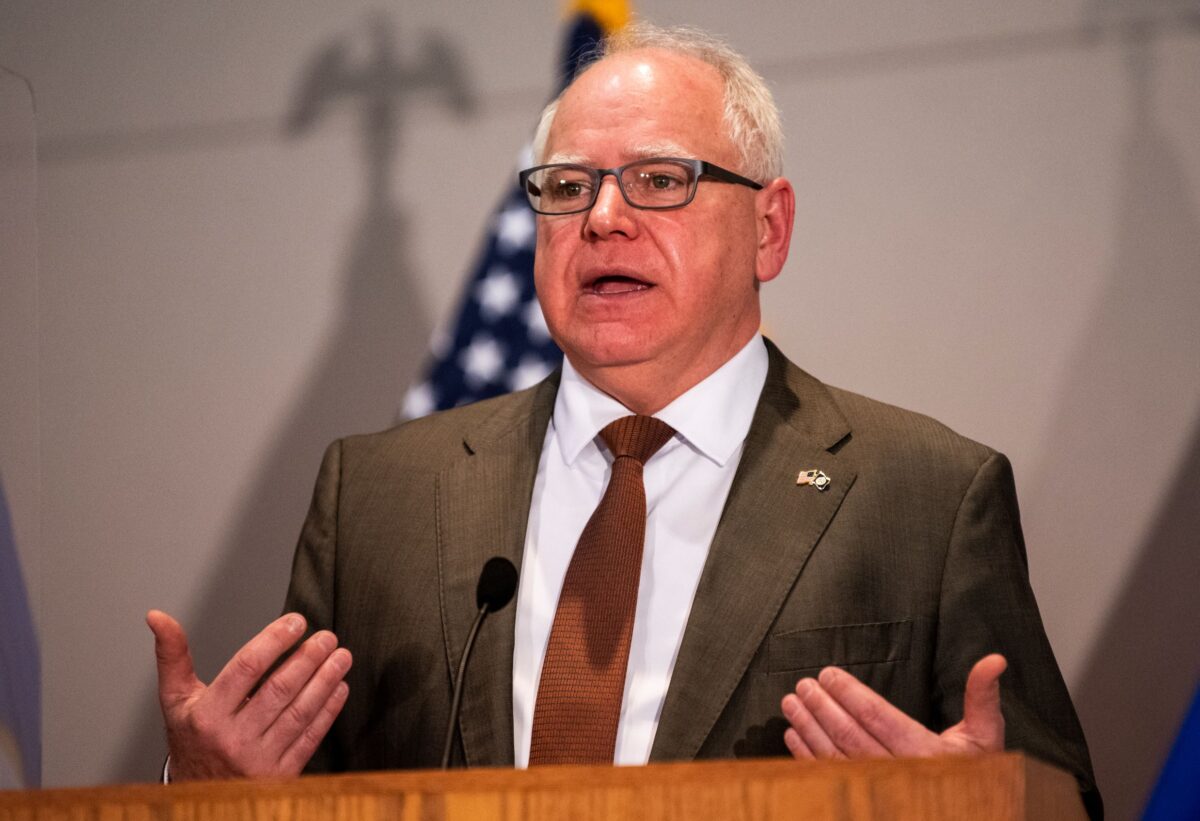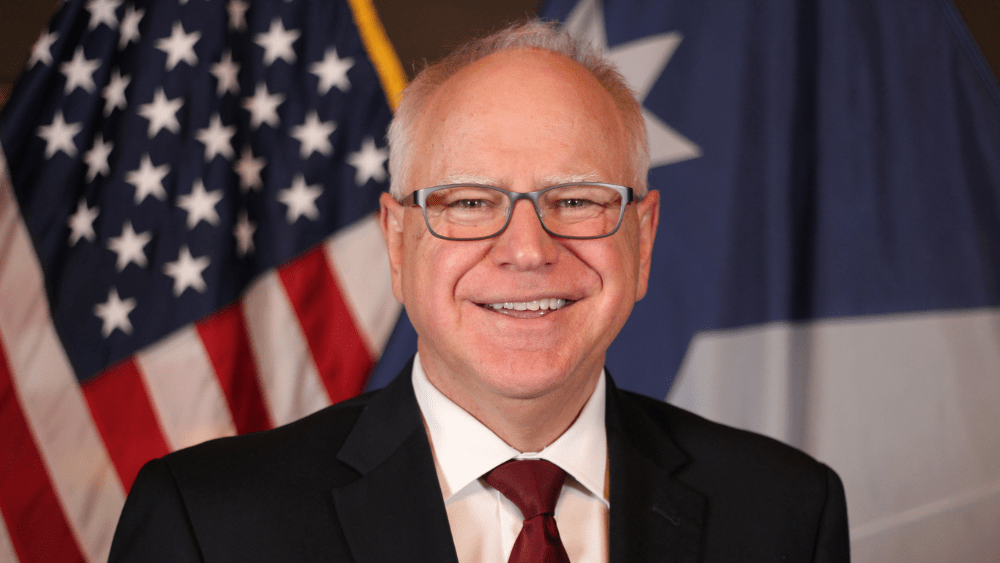Tim Walz: The Governor of Minnesota: Minnesota Tim Walz

Tim Walz, the current governor of Minnesota, is a prominent figure in American politics, known for his pragmatic approach to governance and his commitment to addressing the needs of Minnesotans. His journey to the governor’s office is marked by a diverse background and a dedication to public service.
Early Life and Career
Tim Walz was born in 1964 in Mankato, Minnesota, and graduated from Mankato West High School. He later served in the United States Army from 1983 to 1989, reaching the rank of Sergeant First Class. Following his military service, Walz pursued a career in education, working as a social studies teacher and later as a high school principal. His experience in education fostered a deep understanding of the challenges facing Minnesota’s communities and shaped his commitment to public service.
Political Affiliations and Education
Walz is a member of the Democratic-Farmer-Labor Party (DFL), the Minnesota affiliate of the Democratic Party. He holds a Bachelor of Arts degree in history from Mankato State University and a Master of Arts degree in education from Saint Mary’s University of Minnesota. His educational background and political affiliations have influenced his approach to governing, emphasizing education, social justice, and economic development.
Key Accomplishments as Governor
Tim Walz was elected Governor of Minnesota in 2018 and re-elected in 2022. His governorship has been marked by several significant achievements, including:
- Passage of a historic $1.3 billion education investment package: This investment significantly increased funding for public schools, providing resources for teacher salaries, student support services, and early childhood education.
- Implementation of a comprehensive healthcare reform plan: This plan expanded access to affordable healthcare for Minnesotans, including the creation of a public option for health insurance.
- Leadership during the COVID-19 pandemic: Governor Walz implemented a series of public health measures to mitigate the spread of the virus, including mask mandates and social distancing guidelines. He also worked to ensure the availability of testing and vaccines for Minnesotans.
- Passage of a major infrastructure bill: This bill allocated funding for transportation projects, including road repairs, bridge improvements, and public transit enhancements.
Political Ideology and Governing Style
Tim Walz is generally considered to be a moderate Democrat. He is known for his pragmatism and willingness to work across the aisle to find common ground. He emphasizes bipartisanship and collaborative problem-solving, seeking to build consensus and find solutions that benefit all Minnesotans.
Timeline of Significant Events
- 2018: Tim Walz is elected Governor of Minnesota, defeating Republican Jeff Johnson.
- 2019: Walz signs a $1.3 billion education investment package into law.
- 2020: The COVID-19 pandemic hits Minnesota, and Governor Walz implements a series of public health measures to mitigate the spread of the virus.
- 2021: Walz signs a major infrastructure bill into law.
- 2022: Tim Walz is re-elected Governor of Minnesota, defeating Republican Scott Jensen.
Minnesota’s Political Landscape

Minnesota’s political landscape is characterized by a long-standing tradition of competitive elections and a balance between the two major political parties, the Democrats and the Republicans. While the state has historically leaned towards the Democratic Party, recent years have seen a shift towards more competitive races, reflecting the changing demographics and political leanings of its population.
Major Political Parties and Their Influence
The Democratic and Republican parties are the dominant political forces in Minnesota, with each party holding significant influence over state politics. The Democratic Party, traditionally associated with progressive values, has historically enjoyed strong support in urban areas and among labor unions. The Republican Party, known for its conservative ideology, has found greater support in rural areas and among business interests.
- Democratic Party: The Democratic Party in Minnesota is known for its support for social welfare programs, environmental protection, and progressive social policies. It has a strong presence in urban areas like Minneapolis and St. Paul, where it draws support from diverse communities, including African Americans, Latinos, and LGBTQ+ individuals.
- Republican Party: The Republican Party in Minnesota advocates for limited government, lower taxes, and individual liberties. Its base of support is primarily located in rural areas, where it finds resonance with concerns about economic development and traditional values.
Policy Differences Between the Democratic and Republican Parties
The Democratic and Republican parties in Minnesota have distinct policy positions on a range of issues, reflecting their different ideological perspectives.
- Education: The Democratic Party prioritizes increased funding for public education, universal access to early childhood education, and support for teachers’ unions. The Republican Party, while acknowledging the importance of education, often advocates for school choice programs and increased parental involvement in education decisions.
- Healthcare: The Democratic Party supports expanding access to affordable healthcare through programs like Medicaid and Medicare, while advocating for a single-payer healthcare system in some cases. The Republican Party, on the other hand, favors market-based solutions to healthcare, often advocating for health savings accounts and limited government intervention in the healthcare sector.
- Economy: The Democratic Party focuses on policies that promote economic fairness, such as raising the minimum wage, expanding access to affordable housing, and investing in infrastructure. The Republican Party emphasizes tax cuts and deregulation as key drivers of economic growth, often supporting policies that benefit businesses and entrepreneurs.
Key Issues Facing Minnesota
Minnesota faces a number of critical challenges, including:
- Education: Minnesota has a long tradition of strong public schools, but recent years have seen challenges in closing achievement gaps and ensuring equitable access to quality education for all students.
- Healthcare: The rising cost of healthcare is a major concern in Minnesota, with many residents struggling to afford health insurance and medical care.
- Economy: While Minnesota has a strong economy, the state faces challenges in diversifying its economy, creating high-paying jobs, and addressing income inequality.
- Environment: Minnesota is facing the impacts of climate change, including extreme weather events and rising lake levels.
The Role of Public Opinion in Shaping Minnesota’s Political Landscape
Public opinion plays a significant role in shaping Minnesota’s political landscape, influencing the priorities of elected officials and the outcome of elections.
- Polls and Surveys: Political polls and surveys provide insights into the public’s views on various issues, helping candidates and policymakers gauge public sentiment.
- Social Media and Online Engagement: Social media platforms and online forums have become increasingly important in shaping public discourse and influencing political opinions.
- Grassroots Activism: Citizen groups and advocacy organizations play a vital role in mobilizing public opinion and advocating for policy changes.
Tim Walz’s Policies and Initiatives

Governor Tim Walz has implemented a wide range of policies across various sectors, reflecting his commitment to enhancing the lives of Minnesotans. His policy priorities are driven by a vision for a more equitable, prosperous, and sustainable Minnesota.
Education Reform
Tim Walz’s education policy focuses on improving access to quality education and ensuring that all students have the opportunity to succeed. He has prioritized funding for early childhood education, increased teacher pay, and invested in school infrastructure. His approach emphasizes personalized learning and the development of 21st-century skills, equipping students with the knowledge and abilities needed to thrive in a rapidly changing world.
Healthcare and Access to Healthcare
Governor Walz has made expanding access to affordable healthcare a cornerstone of his administration. He has championed the expansion of MinnesotaCare, a public health insurance program for low- and middle-income Minnesotans, and supported efforts to lower the cost of prescription drugs. His administration has also focused on addressing mental health needs, investing in community-based mental health services and supporting initiatives to reduce stigma associated with mental illness.
Environmental Issues and Sustainability, Minnesota tim walz
Tim Walz recognizes the urgent need to address climate change and protect Minnesota’s natural resources. He has implemented policies to promote clean energy development, reduce greenhouse gas emissions, and protect water quality. His administration has also focused on investing in renewable energy sources, such as solar and wind power, and promoting energy efficiency measures.
Economic Impact of Tim Walz’s Policies
| Sector | Policy Impact | Example |
|---|---|---|
| Education | Increased funding for early childhood education has led to higher enrollment rates and improved early literacy skills. | A study by the Minnesota Department of Education found that early childhood education programs have a positive impact on children’s cognitive development, social-emotional skills, and school readiness. |
| Healthcare | Expansion of MinnesotaCare has provided health insurance to thousands of low- and middle-income Minnesotans, reducing the number of uninsured individuals. | Data from the Minnesota Department of Health shows that the number of uninsured individuals in Minnesota has decreased significantly since the expansion of MinnesotaCare. |
| Environment | Investments in renewable energy have created jobs and reduced greenhouse gas emissions. | The Minnesota Department of Commerce has reported that the state’s renewable energy sector has grown significantly in recent years, creating thousands of jobs and contributing to a cleaner environment. |
Minnesota tim walz – Minnesota Governor Tim Walz, known for his pragmatic approach to governing, has faced numerous challenges during his tenure. One recent concern, however, transcends the realm of traditional political issues, delving into the realm of health and wellness. The emergence of erythritol blood clots as a potential health risk has raised eyebrows across the nation, and it is likely that Governor Walz, as a leader concerned with the well-being of his constituents, will be closely monitoring the situation and exploring potential preventative measures.
Minnesota Governor Tim Walz, known for his calm demeanor and pragmatic approach to governance, might seem worlds away from the flamboyant persona of Justin Simmons , the legendary bassist and co-founder of KISS. Yet, both men share a certain charisma, an ability to connect with their audiences, and a dedication to their respective fields.
Perhaps, beneath the rockstar makeup and political decorum, lies a common thread of passion that drives them both.